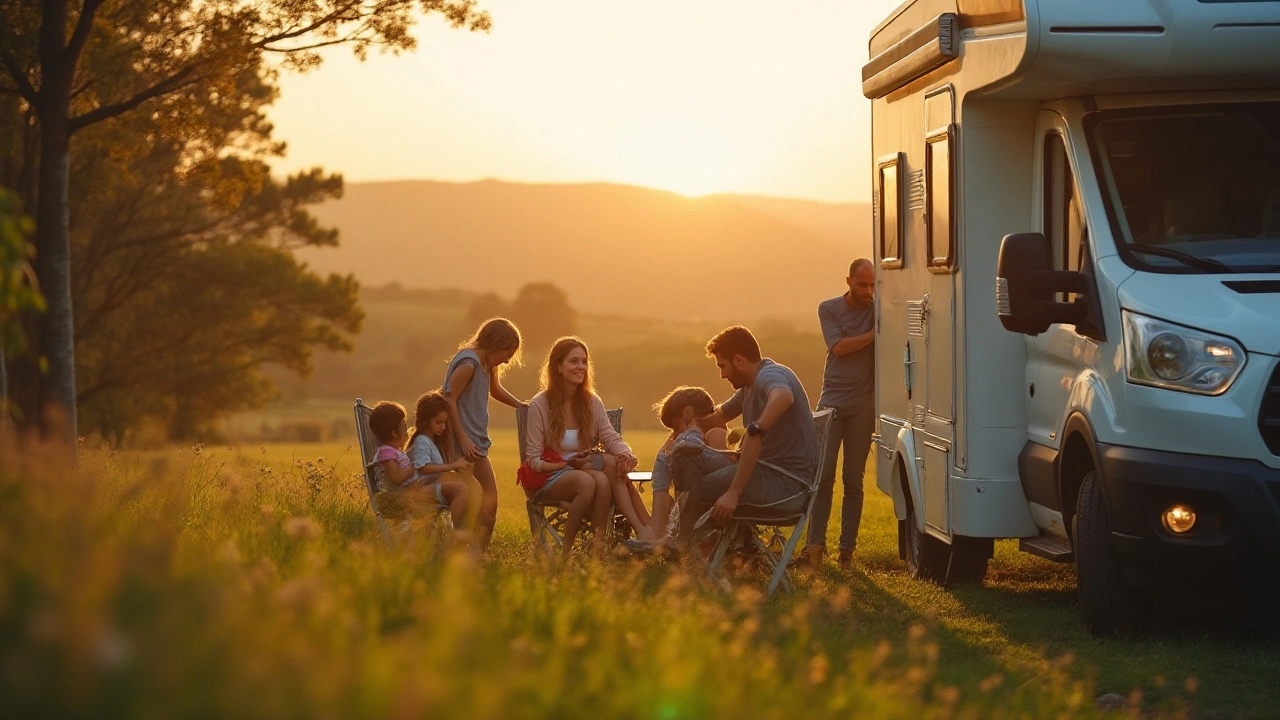Outdoor Power Setup for Motorhomes: Simple Ways to Stay Charged
If you’ve ever tried to watch a movie in a motorhome only to have the battery die, you know how frustrating it can be. The good news is you don’t need a PhD in electronics to keep the lights on, the fridge running, and the 12‑volt TV playing. Below are the basics you need to know, broken down into campsite hookups and off‑grid options.
Plug‑in at Campsites: What You’ll Find and How to Use It
Most campsites in the UK and across Europe offer a 230 V hookup with either a 13 A or 16 A socket. Bring a good‑quality, waterproof extension cord and a surge protector—these two items protect your appliances from sudden spikes. Before you plug in, check the site’s power rating; a 13 A socket can handle about 3 kW, which is enough for a fridge, lights, and a small TV but not for a high‑wattage heater.
When you arrive, locate the power pedestal, turn off the main breaker in your motorhome, and connect the cord. Turn the breaker back on, then test a low‑draw device like a phone charger. If it works, you’re good to go. If the voltage drops or flickers, you may be sharing a circuit with several other pitches—dial the site manager and ask for a dedicated hookup.
Off‑Grid Power Options: Generators, Solar, and Battery Management
Not all adventures stay on a campsite. For remote spots, a portable inverter generator is the most reliable backup. Choose a model that delivers at least 2 kW continuously, runs on petrol or diesel, and has low noise levels (under 65 dB). Keep the fuel tank at least half full and run the generator for a few minutes before loading heavy appliances.
Solar panels are a quieter, greener alternative. A 200‑W fold‑out panel paired with a 100 Ah lithium battery can keep a few LED lights and a 12‑V fan running for days. Mount the panel on the roof or a tripod, angle it toward the sun, and use a MPPT charge controller to maximize efficiency.
Regardless of the source, managing your 12‑volt system is key. Use a dual‑battery setup: one for engine start‑up, one for living‑area loads. Install a battery isolator or a DC‑DC charger to keep the starter battery safe while the second battery powers lights, water pump, and your 12‑V TV. Monitor voltage with a simple digital read‑out; you’ll know when to switch to generator or solar before the battery dips too low.
Finally, don’t forget your small gadgets. A USB‑C car charger, a compact power bank, and a few LED lanterns can keep phones and tablets alive when the main system is down. Keep these items charged at the campsite, then you’ll have a safety net wherever you park.
With a solid plug‑in plan and a backup off‑grid system, you’ll never be left in the dark on your road trip. Test each component before you set off, and you’ll enjoy the freedom of the open road without worrying about power.
Essential Tips for Using Electricity While Camping
Discover how to keep your devices and appliances powered while enjoying the great outdoors. This article explores various methods to access electricity while camping, from using electric hookups at RV sites to portable generators and solar solutions. With practical tips and considerations for environmental impact, this guide helps you prepare for a comfortable and sustainable camping trip. Stay connected and make the most of your wilderness experience.
